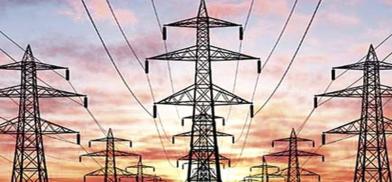India comes to Nepal’s rescue, allows it to sell surplus power in Indian Energy Exchange
In what comes as a big relief to Nepal, India has permitted Nepal to sell its surplus electricity in the Indian Energy Exchange marketplace, a move that would help Nepal to avoid huge power wastage

In what comes as a big relief to Nepal, India has permitted Nepal to sell its surplus electricity in the Indian Energy Exchange marketplace, a move that would help Nepal to avoid huge power wastage. The Himalayan country became an energy surplus state in August and was struggling since then to manage the excess.
India’s Central Electricity Authority on Monday decided to allow Nepal to sell 39 MW of electricity produced by the 24MW Trishuli Hydropower Project and the 15MW Devighat Hydropower Project in the Indian Energy Exchange Limited (IEX), said Nepal’s energy ministry.
Currently, Nepal has a capacity of 2000 MW and the domestic demand stands at around 1500MW. Over 93 percent of the country’s 30 million population has access to electricity. Power generating companies have to shut down some of the turbines just to avoid wastage.
Two months back, Nepal’s Electricity Authority had approached India with a proposal to sell electricity. India’s power ministry on Monday permitted the proposal.
A report in The Kathmandu Post, citing Nepali officials, said the move to allow Nepal in the power exchange market has been a huge respite for their electricity authority, which is facing a wastage of power for more than two months.
The move came just ahead of a meeting between Nepalese Prime Minister Sher Bahadur Deuba and Indian Prime Minister Narendra Modi in Glasgow Tuesday Nepal on the sidelines of the COP26 meeting.
To boost domestic consumption of power, the authorities are taking a slew of measures, including reducing tariffs on different consumer bases. Households are being asked to increase the usage of electricity appliances, including electric stoves. Base charges were also reduced.
For industries, the government offered not to increase the demand rate, and in the agriculture sector, rates for tubewell usage were also reduced.
“Following the Indian approval for Nepal to export its electricity, power trade between the two countries has entered a new phase,” Gokarna Raj Pantha, joint spokesperson for Nepal’s power ministry, was quoted as saying by The Kathmandu Post.
“The NEA will now participate in the auction at IEX from 10-12 am every day in order to sell electricity,” he said. As per the bilateral agreement, Nepal has appointed India’s NTPC Vidyut Vyapar Nigam Limited as its representative to participate in the bid.
Nepal’s poor planning in developing its energy infrastructure is to blame for current problems. That the country would soon become an energy surplus was known to all for too long. However, no one thought of planning to utilize this enhanced power generation.
Furthermore, domestic consumption can’t be increased beyond a point due to infrastructural deficiency. Transmission infrastructure--one of the most critical segments of the overall power infrastructure--remains neglected. Despite improvement in coverage of the population, not enough importance has been accorded to improve the quality of these transmission lines.
Nepal also purchases power seasonally, mostly in winters, from India through other power purchase agreements. However, those mechanisms, officials said, are only applicable for small demands.








Post a Comment